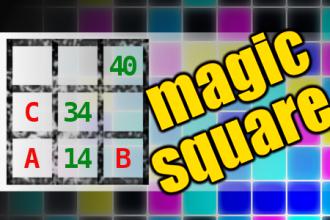MAGIC SQUARE: Calculate A*B-C
The aim is to place the some numbers from the list (4, 8, 14, 19, 23, 29, 30, 34, 40, 61) into the empty squares and squares marked with A, B an C. Sum of each row and column should be equal. All the numbers of the magic square must be different. Find values for A, B, and C. Solution is A*B-C.Correct answers: 3
#brainteasers #math #magicsquare


